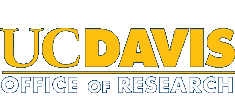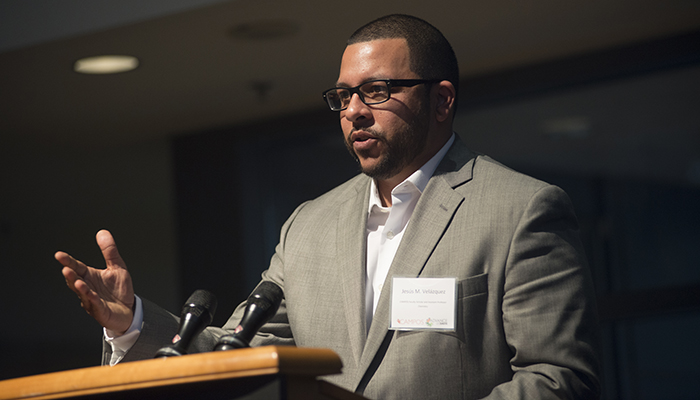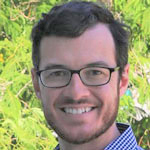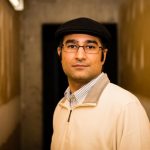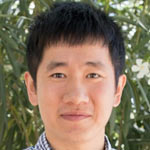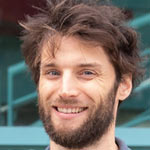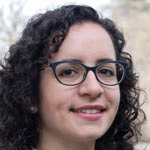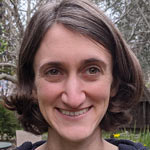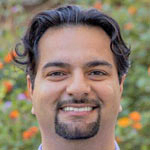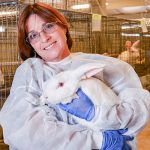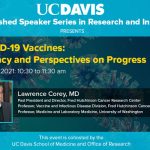UC Davis Sets Record in NSF Early Career Grants in 2021
Sixteen faculty members of the University of California, Davis, are the recipients of the National Science Foundation’s 2021 CAREER grants, setting a campus record for the most awards received and placing UC Davis at the top of the list in the nation (currently in second place). UC Davis also set a record for the number of proposals submitted, at 35.
NSF CAREER grants are the most prestigious awards for early career researchers. The grants can run up to five years and are highly sought after for setting a minimum—rather than maximum—award amount: $500,000 for projects in biology, engineering, and polar programs; and $400,000 for all others.
The full list of recipients can be found here.
The Interdisciplinary Research Support unit in the Office of Research launched the NSF CAREER Prep Program in 2018 to give prospective applicants the insider knowledge and personalized support they need to succeed. The program, led by Sarah Messbauer, Ph.D., provides comprehensive support for early career faculty, encouraging the development of peer applicant cohorts and on-demand one-on-one consultations with research development professionals.
The Interdisciplinary Research Support unit is one of many units in the Office of Research that help advance research and innovation across the university. Visit the IRS team’s Research Development Toolbox today for information and resources designed to improve your grant writing experience.
2021 NSF Early Career Grant Recipients
Assistant Professor, Department of Plant Sciences, College of Agricultural and Environmental Sciences
Bailey is investigating the rapidly changing climatic and socioeconomic conditions and how they have necessitated a need for improved quantitative description and prediction of the associated response of plant system productivity. Current and predicted climatic conditions are characterized by increased magnitude or variability in heat and drought, which has the potential to threaten the productivity of natural and agricultural plant systems. Sustaining the steadily growing human population will require corresponding increases in the efficiency of agricultural systems. The overarching aim of this work is to better understand how light availability, plant architecture, and leaf surface temperature interact to determine the efficiency of plant systems with respect to input resources.

Department of Chemistry, College of Letters and Science
Crabtree and his students will examine chemical processes that form complex organic molecules that are the ultimate building blocks of life on Earth. One of the more surprising places they are found is in cold, dense pre-stellar cores. Current state-of-the-art chemical models fail to accurately reproduce the observed abundances of nearly all complex organic molecules or to predict their presence in pre-stellar cores. High formation rates at these low temperatures could imply that prebiotic chemistry is ubiquitous throughout the Universe, which could have important implications on the search for life.
Department of Civil and Environmental Engineering, College of Engineering
Herman’s goal is to advance fundamental understanding of the coupled and evolving stressors facing water resources systems, and to leverage this dynamic information to transform the process of adaptive planning amid uncertainty. This goal is to be achieved within the context of Northern California water resources, supported by sustained engagement with state and local water agencies.
Assistant Professor, Department of Biochemistry and Molecular Medicine, School of Medicine
Hormozdiari studies structural variations, defined as medium and large genome rearrangements, and how they are a major contributing factor to diseases, complex traits, population genomics and evolution. The project will provide researchers with the necessary tools for ultra-efficient genotyping of a set of polymorphic structural variations in a large cohort of sequenced samples using short-read sequencing technologies. Furthermore, novel mapping-free approaches for comparative structural variations discovery using long-read sequencing data will be developed. This will provide the necessary methods for studying the diverse set of structural variations in sequenced samples of any species using these technologies.
Department of Chemical Engineering, College of Engineering
Kulkarni aims to help design better and cheaper catalysts for fuel cell applications. Existing catalysts are made with expensive platinum-based alloys, which are difficult to scale for mass production. His project will focus on metal organic frameworks that act like nanoreactors. He and his team will develop multiscale models, allowing the researchers to narrow down the nearly endless possible designs to find those best suited for further experiments.
Department of Mechanical and Aerospace Engineering, College of Engineering
Lin’s project aims to use machine learning to bring efficiency and lower cost to the process of giving old electric vehicle batteries new life in renewable energy. Many EV batteries, which are typically working at 80 percent capacity when “retired,” get “second lives” in lower-power systems that store solar and wind energy. But the batteries need to be evaluated before they are reused, and doing this manually is expensive and time consuming. Lin’s goal is to develop a machine learning framework that can check the health of any battery at any point quickly and accurately. If successful, the framework will help researchers develop second-life battery systems and accelerate the green energy revolution.
Department of Materials Science and Engineering, College of Engineering
McCormack’s project will use a combination of computation and experiments to develop tools called phase diagrams for novel high-temperature ceramic materials. These advanced phase diagrams will be essential for materials engineers working to develop ultra-high temperature materials for applications in hypersonics, nuclear (fission and fusion) reactors and shielding for spacecraft, among other things.
Department of Environmental Toxicology, College of Agricultural and Environmental Sciences
Nguyen is studying newly discovered pathways by which sulfur radicals can form in the environment and the potential importance of these reactions for influencing the composition of the atmosphere and understanding human-induced climate impacts. Sulfur radicals are known to be reactive oxidants that can form compounds such as organosulfates, which could affect atmospheric composition and cloud formation. Nguyen and her research group will study how the reactions of sulfur radicals with organic compounds may change under different conditions relevant to cloud-fog droplets and the liquid water of aerosol particles.
Department of Electrical and Computer Engineering, College of Engineering
Putnam’s award will support research that aims to boost infrared spectroscopy, a widespread technology with uses ranging from breath analysis for early disease detection to environmental monitoring for climate science. Putnam’s lab will leverage recent developments in ultrafast lasers and nonlinear optics to develop compact infrared spectrometers with vastly improved resolution and novel capabilities. These new devices will enable many new applications across scientific disciplines.
Department of Electrical and Computer Engineering, College of Engineering
Radulaski leads the Quantum Nanophotonics Lab, exploring the potential of quantum technologies in scientific research, computation and communications. Her CAREER project will explore optically active defects in semiconductors, called color centers. Integrating these color centers into nanophotonic devices could improve the performance of quantum hardware for applications in quantum communication, computation and simulation.
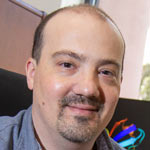 Nitzan Shabek
Nitzan Shabek
Department of Plant Biology, College of Biological Sciences
Shabek’s project will use advanced methods from structural biology, biochemistry and plant biology to elucidate the sensing mechanism of strigolactones, an emerging and unique class of plant hormones that regulate many aspects of plant growth and development. The knowledge generated from this project may have far-reaching impacts in understanding the biology of plant hormone signaling pathways, in addition to advancing technologies in agriculture, including germination control of crops and parasitic weeds.
Department of Mathematics, College of Letters and Science
Starkston’s research is in symplectic topology and low-dimensional topology. For example, she studies how four-dimensional spaces, or manifolds, can be represented in two or three dimensions. One approach to that, Starkston said, is to construct a series of two-dimensional pieces that fit together in a specific way to define a four-dimensional object, much as a floor, walls and roof can fit together to define a three-dimensional house. The four-dimensional spaces she studies are abstract, but could represent anything with four parameters — such as a three-dimensional object that changes over time.
Department of Computer Science, College of Engineering
Thakur’s project tackles the problem of repairing mistakes in deep neural networks, or DNNs, a type of machine learning algorithm loosely modeled after the human brain, which aim to mimic human intelligence by learning from experience. They have been successfully applied to a wide variety of problems, including image recognition, natural-language processing, medical diagnosis and self-driving cars, but they are far from infallible and mistakes can have disastrous consequences. Thakur’s goal is to reduce or eliminate this danger by developing techniques and tools to repair a trained deep neural network once a mistake has been discovered.
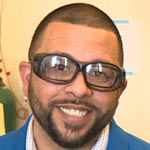 Jesus Velázquez
Jesus Velázquez
Department of Chemistry, College of Letters and Science
Velázquez’s lab creates new materials for use in nanoelectronics, green energy and environmental remediation. His grant will support research on compounds called chalcogenides, which contain the elements sulfur, selenium or tellurium. Many chalcogenides are semiconductors, and can harness sunlight to create fuels from carbon dioxide or convert solar energy into electricity. Velázquez and his students will use computational modeling to help develop new chalcogenides for energy conversion uses. The team will collaborate with researchers at the University of Colorado Boulder, the Molecular Foundry at Lawrence Berkeley National Laboratory and the SLAC National Accelerator Laboratory.
Assistant Professor, Department of Physics and Astronomy, College of Letters and Science
Wetzel and his student research team are working to understand how galaxies like our Milky Way formed. Catalogs derived from the simulations will be made available to help optimize observational surveys of the Milky Way. The team will develop and disseminate their interactive GalaxyLab program and use it to teach an undergraduate computational astrophysics class. The team will use cosmological simulations to track the population of stars formed in giant molecular clouds in the MW disk and compare it to stars stripped from companion dwarf galaxies.
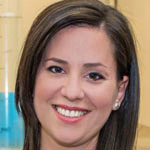 Katerina Ziotopoulou
Katerina Ziotopoulou
Department of Civil and Environmental Engineering, College of Engineering
Soil liquefaction remains a leading cause of earthquake damage worldwide. Ziotopoulo’s project will investigate and formalize new approaches for learning from geotechnical data and inform the next generation of liquefaction evaluation tools. Increasing amounts of data from the field and from experiments, together with advances in algorithms and data storage create an opportunity to exploit data science in the earthquake engineering toolbox. Her CAREER award will integrate physics-based and data-driven methods to accelerate discoveries in geotechnical engineering and develop robust, validated tools that contribute to reducing earthquake damage and increasing societal resilience.
